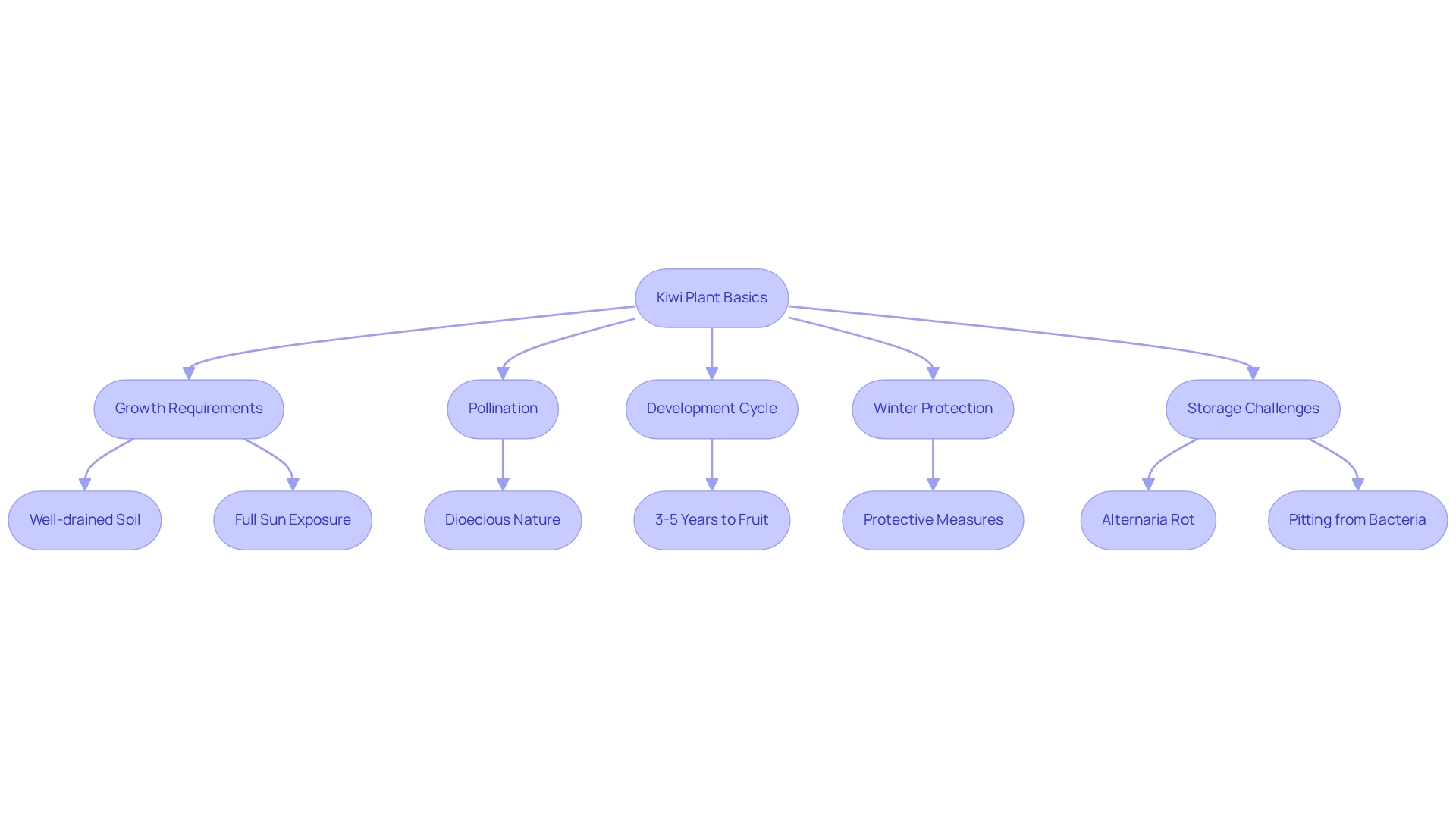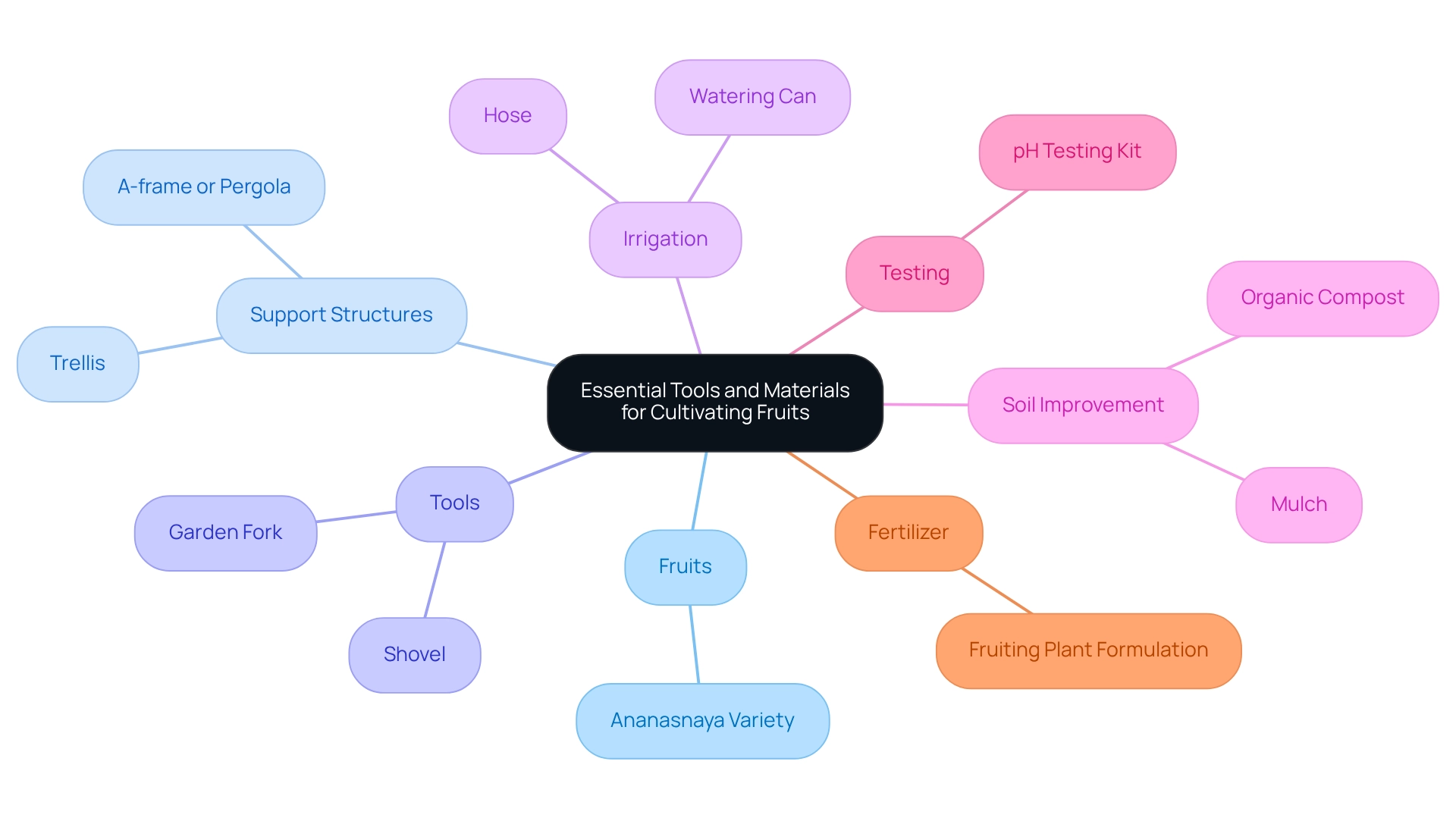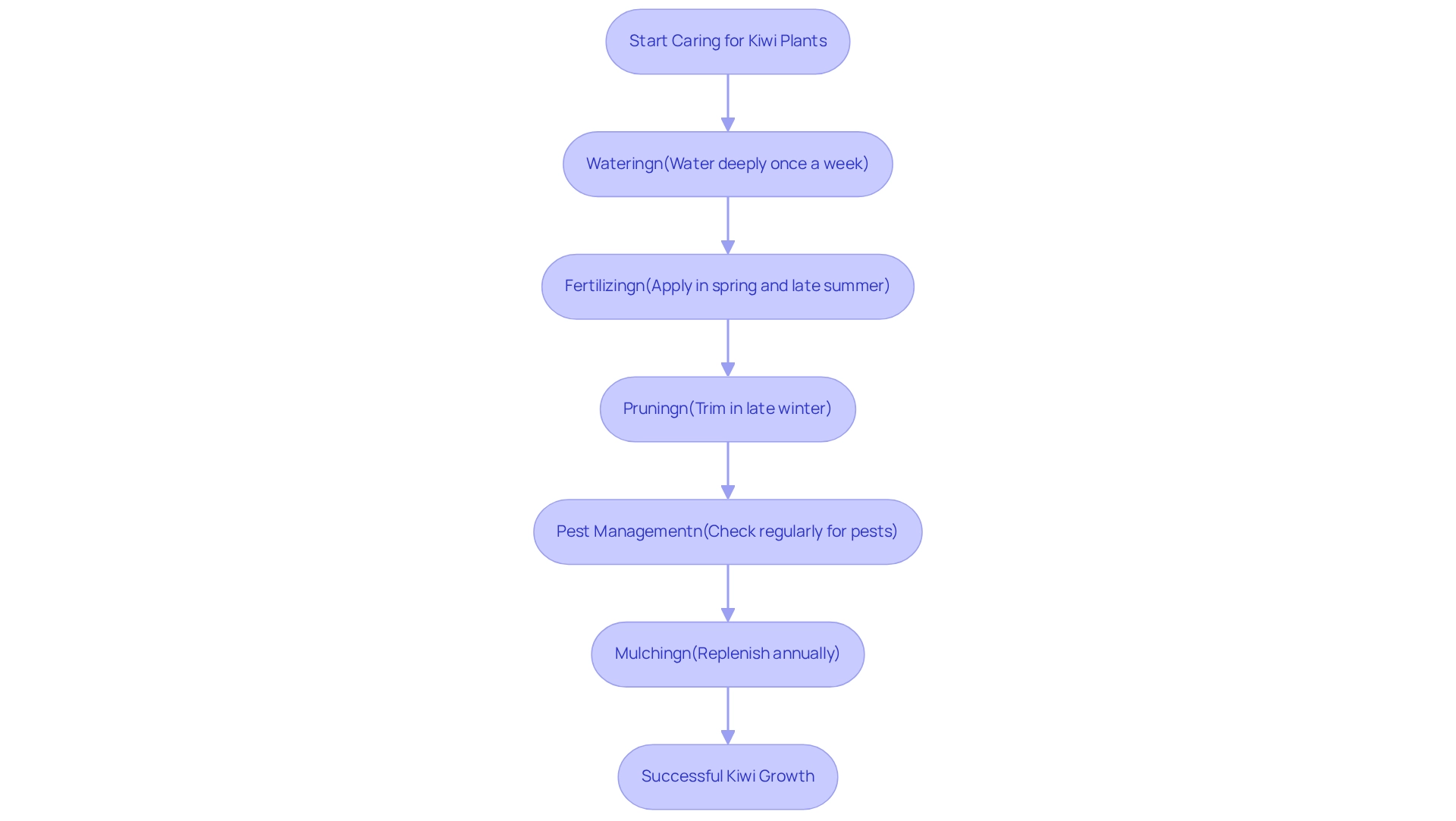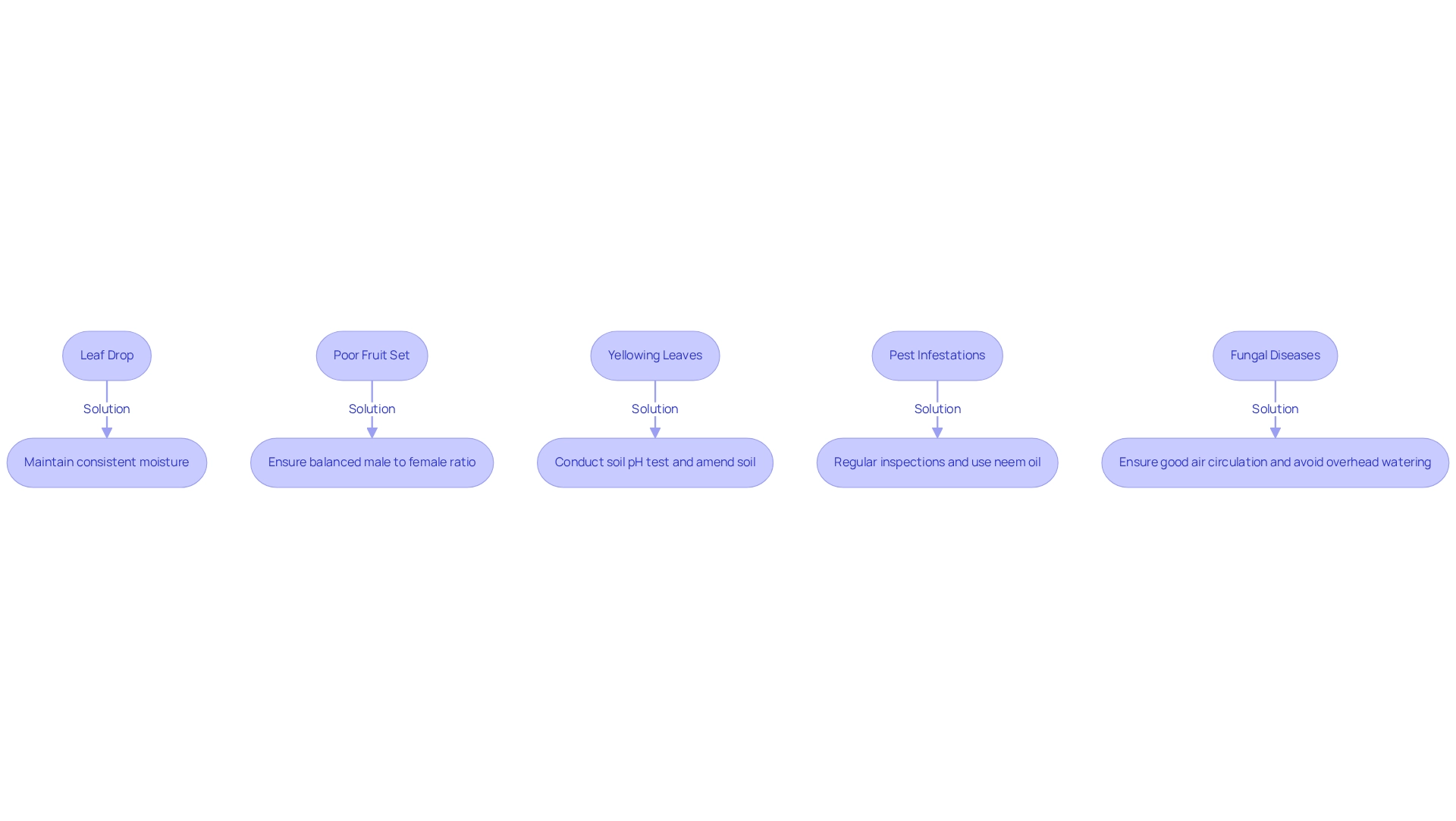
5 Steps to Grow a Prolific Kiwi Plant Successfully
Share
Have you ever wanted to pick sweet, homegrown kiwi right from your backyard but felt unsure where to start? You're not alone—many gardeners struggle to grow kiwi vines that actually produce fruit. With the right guidance, tools, and plant variety, your kiwi plant can thrive and deliver delicious harvests year after year.
👉 Want to skip the guesswork? Grab your Prolific Kiwi Hardy Plant from Everglades Farm—it’s disease-free and ready to plant.
1. Understand Kiwi Plant Basics

2. Gather Essential Tools and Materials
- These fruits: Ideally, you want to collect one male and multiple female varieties to ensure effective pollination. The Ananasnaya variety, known for its delightful pineapple-like flavor and robust growth, is an excellent choice for home gardeners like you.
- Trellis or support structure: A sturdy wooden or metal trellis is vital for supporting the vigorous growth of vine fruits, which can stretch up to 30 feet, as gardening expert Shirley Bovshow points out.
- Shovel: This handy tool is necessary for digging holes to position your vine fruits properly.
- Garden fork: A garden fork is useful for aerating the soil, which promotes healthy root development.
- Watering can or hose: Regular irrigation is essential, so having a watering can or hose ensures your crops receive the moisture they need.
- Mulch: Using straw or wood chips can help retain soil moisture and suppress weeds, making your gardening journey easier.
- Organic compost: Enriching the soil with organic compost provides essential nutrients for optimal growth.
- pH testing kit: Checking soil acidity is important; it should ideally be between 6.0 and 6.8 for vine fruits to thrive.
- Fertilizer: Opt for a formulation specifically designed for fruiting plants to support healthy growth and abundant fruit production.

3. Plant the Kiwi Correctly
-
Choose the Right Location: It’s important to opt for a sunny area with well-drained ground. Avoid spots that are prone to frost, as young plants can be particularly vulnerable to trunk injury from spring frosts.
-
Prepare the Ground: Start by testing the earth's pH. We want a slightly acidic environment, so consider amending the ground with organic compost. Loosening the soil with a garden fork will improve aeration and drainage, helping your plants thrive.
-
Dig the Holes: Create holes that are twice the width and depth of the root ball of your vines. Make sure they are spaced 8-10 feet apart to allow for proper growth and airflow, which is crucial for successful cultivation.
Position the Vines: Place the kiwi vine in the hole, ensuring the crown is even with the ground surface. Fill the hole with earth and gently compact it around the roots to eliminate air pockets, giving your plants the best start.
- Water Generously: After planting, water the plants deeply to compact the ground. Applying a layer of mulch around the base will help retain moisture and regulate soil temperature, nurturing the prolific kiwi plant as it grows. For optimal growth, consider applying a high potassium fertilizer in spring to encourage flowering and fruiting. Additionally, remember that dormant pruning each year is crucial for successful fruit production, as noted by agronomist M. Ryan Slaughter.
By adhering to these guidelines, including the method of pinching back any regrowth to one leaf beyond the last cut, you can improve your chances of growing healthy and productive fruit-bearing species. Finally, ensure you acquire nutritious fruit-bearing varieties from trustworthy suppliers to enhance your likelihood of successful growth. Together, we can cultivate a flourishing garden!

4. Maintain and Care for Your Kiwi Plant
- Watering: Consistent moisture is crucial, especially during dry spells. Water deeply once a week, allowing the soil to dry slightly between waterings. Drip irrigation is a wonderful choice for its effectiveness and ability to encourage deep root development, making it an excellent option for cultivating kiwifruit.
- Fertilizing: In early spring, apply a balanced fertilizer to promote healthy growth, followed by another application in late summer to enhance fruiting. Proper fertilization is key to achieving robust yields. Keep in mind that mature fruit-bearing plants need chilling hours during winter to bloom the next season, so planning your fertilization accordingly is important.
- Pruning: Annually trim your fruit vines in late winter to remove dead or weak shoots. This practice not only shapes the vegetation for better air circulation and sunlight exposure but also encourages vigorous new growth. As Ivanka Kunianska wisely observes, "With appropriate attention, these fruits can grow into large and impressive specimens."
- Pest Management: Regularly examine your foliage for pests such as aphids and spider mites. If you notice any, using organic insecticidal soap can help manage infestations effectively and sustainably.
- Mulching: Replenish mulch annually to suppress weeds and retain soil moisture, which is essential for the health of your fruit-bearing crops. Additionally, consider planting appropriate fruit varieties in sheltered areas to reduce frost damage, especially during extremely cold years.

5. Troubleshoot Common Growing Issues
- Leaf Drop: This concern often stems from inconsistent watering practices. To prevent leaf drop, strive to maintain consistent moisture in the ground, ensuring the roots don’t become waterlogged. Monitoring soil moisture levels is essential. As Pat Welsh wisely points out, it’s crucial not to disturb the natural mechanisms in the soil that support beneficial organisms.
- Poor Fruit Set: If your kiwi plants are struggling to produce fruit, insufficient pollination might be the reason. Make sure you have a balanced ratio of male to female plants, as this is vital for successful fruit development.
- Yellowing Leaves: Yellow leaves can be a sign of nutrient deficiencies or drainage issues. Conducting a soil pH test and amending the soil as needed can help correct any imbalances. Additionally, ensure that drainage is adequate to promote healthy root growth. Keep an eye on environmental factors; for example, rainfall exceeding 150 mm can lead to flooding in the root zone, worsening these problems.
- Pest Infestations: Regular inspections are key to catching pests early. If you notice any infestations, address them promptly with neem oil or insecticidal soap to minimize harm to your plants. Building a community of fellow gardeners can offer invaluable support and shared knowledge for troubleshooting.
- Fungal Diseases: To prevent fungal issues, ensure good air circulation around your plants and avoid overhead watering. If you detect fungal diseases, promptly remove affected leaves and consider applying a fungicide to control the spread. The ongoing discussion about deep plowing versus no-dig gardening techniques highlights the importance of soil management practices in maintaining the health of the prolific kiwi plant, allowing you to cultivate healthy kiwi plants that truly thrive in your garden by addressing these common issues with proactive measures and leaning on community support. Remember, you’re not alone in this journey; we’re all in this together!

Conclusion
🌱 Bring Tropical Flavor to Your Backyard—Start Today
Growing kiwi at home is easier than you think when you start with healthy plants and a step-by-step plan. Everglades Farm offers premium, disease-free plants and expert guidance to help you succeed.
👉 Get your Prolific Kiwi Hardy Plant today and let’s grow something delicious together!
Frequently Asked Questions
What is the scientific classification of the kiwi plant?
What are the growing conditions required for the prolific kiwi plant?
What does dioecious mean in relation to the kiwi plant?
How long does it take for the prolific kiwi plant to produce fruit?
How tall can the prolific kiwi plant grow?
What is essential for supporting the growth of the prolific kiwi plant?
Which kiwi varieties have higher vitamin C levels?
What strategies can help protect young kiwi vines during winter?
What challenges can affect the quality of harvested kiwi fruit?
What tools and materials are essential for cultivating kiwi plants?
What is the ideal soil pH for growing vine fruits?
What is a recommended variety of kiwi for home gardeners?


